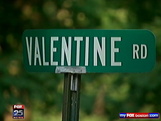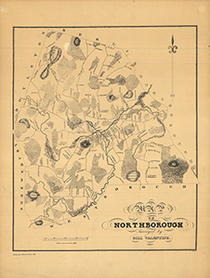"Call to Action Kit" of the Records Preservation and Access CommitteeThe RPAC is a joint Committee of the Federation of Genealogical Societies, the National Genealogical Society, and the International Association of Jewish Genealogical Societies.This mission statement of the committee is to advise the genealogical community on ensuring proper access to historical records of genealogical value in whatever media they are recorded, on means to affect legislation, and on supporting strong records preservation policies and practices.
The Records Preservation and Access Committee has created a "Call to Action Kit" to support the "Stop ID Theft NOW!" initiative. You can access the kit at http://www.fgs.org/rpac/sddi-call-to-action-kit/. If you have questions concerning the Social Security Death Index (SSDI) and its possible loss as a resource for the genealogical community, please check all the resources available in the kit including: 1) Educational videos and FAQ sheets. 2) Information on the "Stop Identity Theft NOW!" petition via the "We The People" website. 3) Form letters that you can use to contact Congress and let them know you do not support removal of the Social Security Death Index. 4) Ways to spread the word to other members of the genealogical community. Additional information about the committee and its objectives is here. An earlier article about the "Stop ID Theft NOW!" initiative can also be found here. I urge you to learn as much as you can about the issue of closing access to the SSDI and to contact your representatives in Congress to make your concerns known.
0 Comments
Internet Blackout Day Starts in Protest Against PIPA and SOPAI spend a considerable amount of time on the internet. And I'm not talking just social media and planning my financial future. By definition, I am a RESEARCHER. I hunt down and dissect original documents with the goal of piecing together history in an ethical and professional manner. As I can't get myself to the Library of Congress or the Allen County Genealogical Library in Indiana in a jiffy, I do rely on scanned copies of original documents and books to complete my work.
Today, I got a taste of what life was like before internet resources became available to the public. My GO-TO library of historical publications, the Internet Archive (www.archive.org) was dark. Scrap that idea of being able to read the 1793 book written by the minister of our town's only church. Wikipedia (www.wikipedia.org) ? I don't use it as a "primary source," or original source of information, because it isn't one... but it sure works on getting the ball rolling on which facts to confirm elsewhere in original documents. Uproar was everywhere, from the Huffington Post to FaceBook, and even Senator Marco Rubio, Republican of Florida, said he would no longer back the legislation he co-sponsored. Because the current legislation being considered hasn't passed, I was freely able to access other sites with original documents. Only time will tell how internet users can occupy the cloud to make their collective democratic voices heard, but this new world is certainly wild. Oversight and regulations do need to be put in place to protect copyright laws, but collateral damage to online sites that support primary research should be carefully considered as the laws are fashioned. Where the Streets Have No Name? Photo courtesy Fox 25 (Boston) Photo courtesy Fox 25 (Boston) In 1830, a survey map of the town of Northborough was created by resident Gill Valentine. The historical significance of the rendering comprises the names of landowners, vital industries, and familiar topography of the town. Curiously, the streets are not labeled, although they were named at that time. Today those are the same streets we drive on regularly, whose names are often too familiar to warrant a second thought. While many bear the names of old families, such as Brigham and Fay, others simply carry the ID of landmarks and land forms, such as Church and Stirrup Brook. Attractive and elegant new red street signs are a testimony as to the importance of street naming and I like how they show you both where to go as well as where we have come from. As for those signs? My friend who lives on Valentine Road is used to her street sign disappearing every February, a la incurable romantics. My friend who lives on Tomahawk pretty much assumes that anything with the high school mascot's name on it won't last more than a week or two. So when Fox News showed up last week to cover the story that over 100 street signs in town have gone missing, I wasn't very surprised.  1830 survey map by Gill Valentine. 1830 survey map by Gill Valentine. You may or may not have seen the coverage on the late evening news a few weeks back, but as my other friend, Serendipity, will tell you, always put on lipstick and style your hair before heading out to a baseball game near the center of any town. Yes, a few of the sound bites were ME (and my hand gestures) explaining what I have seen and heard about this local scandal. The $15,000 price tag to replace those elegant new red signs is a serious matter, as are the safety and "getting lost in your own hometown" factors. Off camera, though, I'll admit that I joked that I was more concerned about the loss of visible reminders of Northborough's founding families' names. Mapmaker Gill Valentine would certainly have gotten a huge chuckle out of this, considering he did not use the street names 1830 anyway, and that his namesake sign had nothing to do with a holiday! SOURCE:
Map of Northborough, Surveyed by Gill Valentine. Northborough Historical Society, 1830. |
AuthorBeth Finch McCarthy
|

